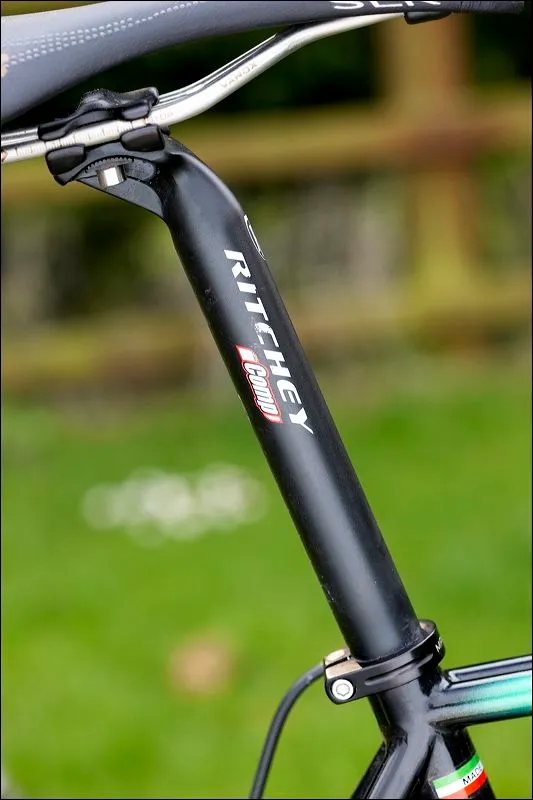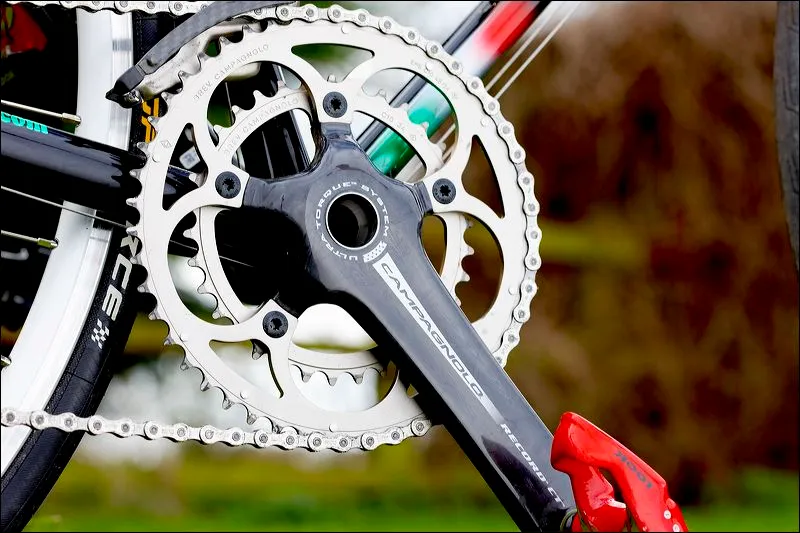The Simoncini Gilco takes a very unusual approach to the use of steel tubing. Its twin-tube design will turn heads and get people talking. But being different comes at a price. Does it deliver a performance advantage or is the design to the detriment of performance?
Simoncini isn’t a brand that springs to mind when you mention Italian bike builders, but while Colnago or Bianchi might grab more column inches, that doesn’t mean this small Tuscan builder should be ignored.
Ride & handling: smooth but unpredictable
The Gilco has what some might call a typically Latin temperament – hot one minute, but cool the next. The riding position is low, so it feels faster into a headwind, but the bottom bracket sways too much when you press hard on the pedals.
It’s in its handling though, that the Simoncini displays the most unpredictable characteristics. The frame glides over surfaces that would have any other road bike kicking back through the handlebars, but the fork’s considerable fore and aft movement gave cause for concern under heavy braking. The fork feels like it’s trying to tuck under the front triangle.
If we were comparing this with pure race bikes it would barely register on our scoreboard. It’s fair to say that its appeal may be somewhat limited.
If you are under 75kg, it does give a soft ride that is second to none, so earns itself a recommendation for slightly-built riders with their sights set on long distance Audax targets or Paris-Brest-Paris in 2011.
There’s also the exclusivity factor – you’re unlikely to bump into many other riders with the same bike.
Frame: deeply unorthodox
The Gilco is very hard to ignore because it looks like no other road bike currently on the market.
While it boasts a thoughtful dose of retro styling, the frame design is truly unorthodox.
Building its steel and aluminium frames in-house – rather than outsourcing operations to China – Simoncini has teamed up with design guru Gilberto Columbo, aka Gilco, and created miniature steel tubing.
Rather than single down-, top- and seat tubes, this miniature tubing is placed side-by-side to create visually stunning tubing. The theory is that this creates a vertically compliant but laterally stiff frame.
It represents a leap of faith, though. Similar ideas using titanium have been shown to have comparatively poor resistance to the kind of twisting forces you get in hard cornering or powerful pedaling. It could just work for those riders who would willingly sacrifice some stiffness for comfort.
Equipment: top kit – but it needs to be
The get the Gilco down to a sensible weight, you have to dig deep into your pocket for expensive kit – in this case Campagnolo Record. The frame may look light and minimalist, but we’re talking radical expenditure to get to the same weight as a Trek Madone 4.5 that costs £2000 less.
Due to the unorthodox frame design the seat-tube is effectively quite short so the seatpost may require trimming in order to drop it down far enough.
The Record Ergopower levers are a dream to use and the easily adjustable and light 3TTT stem and ergonomically sound Bontrager RaceLite handlebars were firm favourites among the testers. They are also light enough to help offset the frame and fork weight.
Wheels: overkill
The handbuilt wheels based on Mavic CXP33 rims are around 600g per pair more than the others on test. The greater proportion of their weight is focussed on the rim, and while strongly constructed using a three-cross spoke pattern, we view them as overkill for all but the heaviest riders.
Substituting lighter wheels would certainly help to offset the frame’s lack of responsiveness on climbs.















